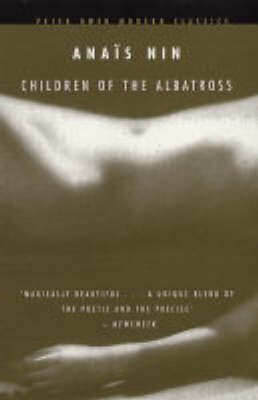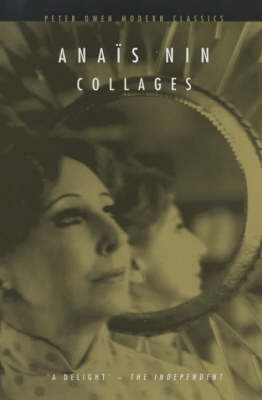Peter Owen Modern Classic
4 total works
Now famed for her extraordinary volumes of erotica, Anais Nin originally made her reputation with a collection of lyrical novels known as the Cities of the Interior series. Published in the aftermath of the Second World War, they were concieved by Nin as part of a 'roman fleuve', or continuous experience. LADDERS TO FIRE in 1946 was the first. This poetic, sensual novel focuses on the lives of a group of women as they undergo a period of emotional and sexual development. They record their experiences as they struggle to understand both themselves and each other. As with most of Nin's novels, LADDERS TO FIRE draws its inspiration from her confessional diaries begun in 1914 at the age of eleven. It dates from the period when Anais Nin moved to New York, a time also explored in the film Henry and June.
CHILDREN OF THE ALBATROSS is conceived as a series of lyrical descriptions of the experience of Djuna, a former ballet dancer and her circle. A woman of forty with an unexplained fortune, her only friends are associates of the ballet world, men who tend to attract her only by their least mature qualities. The central account of the novel is Djuna's love affair with Paul, a seventeen year-old youth who finally leaves her. On the surface a portrayal of the clash between autumnal and adolescent passions, this is an insightful tale about an older woman who, as the result of an unhappy childhood, rebels against male tyranny and instinctively looks for the child - one in whom 'the arteries of faith have not hardened' - rather than the man in her lovers. Initially set against a backdrop of Montmartre cafe-life, the novel's pattern becomes more blurred, as if the author retreats into an interior world where dream is the only reality.
Collages explores a world of fantasy and dreams through an eccentric young painter. A radical work in its time (1964), Anais Nin dispensed with normal structural convention and allowed her characters to wander freely in space and time in an attempt to describe life with the disconnected clarity of a dream in which hip and freakish lives intersect or merge. Making a rapid escape from her sick father in Vienna, Renate begins her sensation-seeking travel odyssey accompanied by a gay Norwegian man who allows her to open one of his chinese boxes and read a chapter of his past each time she finds his absence unbearable. They move from Mexico to California where Renate, when she is not painting portraits, works as a hostess at a beach nightclub with a 'way-out' clientelle. She befriends Nina, who wants to wash the floor with beer, uses her dress as a tent and does witch-laughter for radio, and further adventures ensue. Perhaps reflecting a developing contemporary awareness of abstract art, Collages is a series of impressions rather than a coherent whole, a shifting notebook indelibly inscribed with Nin's humour, invention and unrivalled gift for sensuous description.
THE FOUR CHAMBERED HEART continues the adventures of Djuna, the eccentric star of the preceding novel, CHILDREN OF THE ALBATROSS. Djuna is in love with a husky and feckless Guatemalan guitar player called Rango. They make their abode on on a squalid, leaky houseboat anchored on the Seine which, like their relationship, is destined to go nowhere. Rango's volatile personality and bohemian outlook (he is described as 'a child lodged in a big man's body by a merry freak') ensures that the dream of accomplishing the very something that Djuna awakes in him will never come to anything. For her part, the self-sacrificing Djuna is forced to accomodate into her home Rango's sickly wife Zora to whom he is tied by a half-blind complicity in her desire to exploit all who come within range. Naturally, Zora assiduously cultivates her various illnesses in order to secure a stranglehold on the two lovers.



